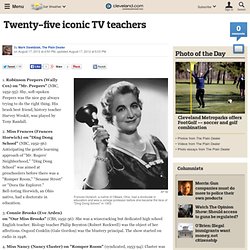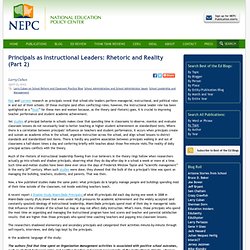

The Shame of Classroom Visits. Coming to my new school this year, I made a concentrated commitment to be in classrooms more that I have ever been before.

Quite often, skepticism and eye-rolling tend to follow statements such as these, and rightfully so. Each of us knows the typical pattern: the Principal makes these ambitious proclamations, does in fact show up in classrooms for the first few of weeks, and then steadily fades into the managerial quagmire that can consume school administration. I know this because I have both seen this in my own administrators when I was a teacher, and followed this cadence as a Vice-Principal and Principal myself.
However, save for our monthly District Administrator Meeting that happens one Thursday per month and a couple of scattered meetings here and there, I have stuck to my regimen of being in classrooms during Period 2 each day. And each day that I am in classrooms, I have the very same thought as I walk back to my office: what a shame. This situation is going to change. How to enrich public education. Instead of advocating for site-based selection that places the authority for hiring teachers solely with principals, CET should honor teachers' professionalism by calling for teacher involvement in site-based hiring.

Additionally, when a principal is being hired, teachers should have the time and resources to conduct interviews, involve students and families, and be part of the final decision. Site-based decision-making must also involve teachers in the design of school budgets, teacher assignments, daily schedules, and school-wide programs. It should not be a mechanism for removing experienced teachers from schools simply because their years developing as professionals mean that they must be paid a commensurate wage. On teacher evaluations, CET should first clarify what it means by "effective. " For example, "effectiveness" could be the extent to which teachers have the flexibility to modify curricula, instruction, assessments, and policy to meet student needs. Center for Creative Leadership: leadership at CCL.org, leadership Development, leadership Training, Executive Coaching, CCL.
VIVA-ISEA_2_Final. Twenty-five iconic TV teachers. AP fileFrances Horwich, a native of Ottawa, Ohio, had a doctorate in education and was a college professor before she became the face of "Ding Dong School" in 1952. 1.

Robinson Peepers (Wally Cox) on "Mr. Peepers" (NBC, 1952-55): Shy, soft-spoken Peepers was the nice guy always trying to do the right thing. His brash best friend, history teacher Harvey Weskit, was played by Tony Randall. 2. 3. 4. 5. 6. 7. AP fileThey teased him a lot, 'cause they had him on the spot. 8. 9. AP fileDebbie Allen played the same teacher in the 1980 movie "Fame" and the TV series of the same name that sprang from it. 10. 11. 12. 13. 14. 15. Principals as Instructional Leaders: Rhetoric and Reality (Part 2) Past and current research on principals reveal that school-site leaders perform managerial, instructional, and political roles in and out of their schools.

Of these multiple (and often conflicting) roles, however, the instructional leader role has been spotlighted as a “must” for these men and women because, as the theory (and rhetoric) goes, it is crucial to improving teacher performance and student academic achievement. Yet studies of principal behavior in schools makes clear that spending time in classrooms to observe, monitor, and evaluate classroom lessons do not necessarily lead to better teaching or higher student achievement on standardized tests.
Where there is a correlation between principals’ influence on teachers and student performance, it occurs when principals create and sustain an academic ethos in the school, organize instruction across the school, and align school lessons to district standards and standardized test items. In the academic language of the study: